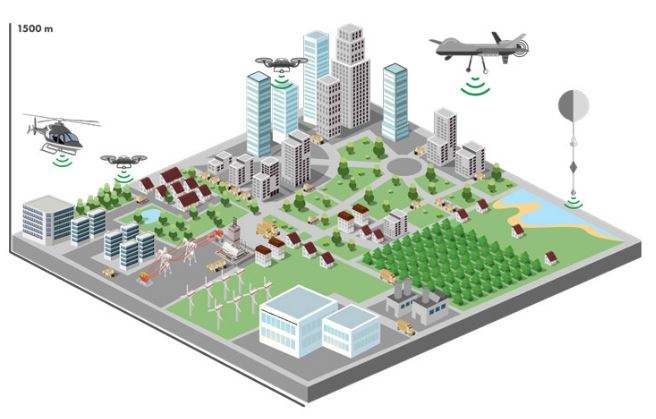The 2015 United Nations Climate Change Conference in Paris resulted not only in binding commitments. While the 175 signatories agreed to pursue efforts to limit the temperature increase to 1.5°C by the end of the century, they also took concrete measures to achieve this. The cornerstone of the agreement is the promise by the developed countries to invest $100bn by 2020 to help developing countries cope with climate change. As part of this effort, the French government agreed to support 100 climate initiatives.
One of these is a project proposed by a French company, Climate City, to deploy a network of balloons and drones equipped with sensors above and around cities. The system would track 50 parameters across Europe, Asia, South America and Africa. The idea, explains project co-founder Laurent Husson, is to provide climate data for cities of more than 300,000 inhabitants. Each agglomeration generates phenomena that influence the climate and have an impact on pollution and natural disasters. An understanding of these phenomena would allow those cities to take appropriate action: create green areas, reduce the size of buildings to ensure better air flow, avoid building a factory in a certain location, etc.
To achieve its objective, Climate City is working with a number of regional partners, including the Indian startup Earth2Orbit. This company was founded in Bangalore in 2009 by Susmita Mohanty, a former NASA scientist. Earth2Orbit began by approaching companies with plans to launch satellites on behalf of the Indian space agency, ISRO. Mohanty was invited by France’s CNES space agency to attend a conference during the Toulouse Space Show, where she was presented to the founders of Climate City.
The system designed by Climate City relies on a number of instruments, including optical radars, installed on a network of 15-20 balloons per city of at least one million inhabitants. The balloons are deployed at an altitude of 500-1,000m. Husson explains that the balloons are deployed over the agglomeration while drones fly around the peripheral area to collect information on climatic phenomena originating outside the city and affecting the urban climate. In India, Earth2Orbit is talking to local authorities to organize the launch of airborne sensors over Bangalore. In this way, Climate City could establish a new source of data to complement existing orbital and ground-based sensors operated by the pollution control centre of Karnatka State, of which Bangalore is the capital.
Mohanty says that the company hopes to organise an initial demonstration in Bangalore between November 2017 and February 2018. Pollution in India reaches a peak during the winter months. The demonstration would involve an initial network of balloons to take measurements and demonstrate their utility. Prior to that, Climate City hopes first to carry out a demonstration in France. To clear the way for the Indian project, Earth2Orbit needs to convince the Karnatka authorities and obtain a green light from the Indian Directorate General of Civil Aviation to fly the aerial platforms. Mohanty indicates that discussions are ongoing with the local anti-pollution centre and universities to determine how the system can be deployed. It will also be necessary to import the sensors from France or find Indian suppliers, install the sensors on the platforms and identify the deployment zones.
The next stage in the Climate City project will be to extend the trials to other cities in Asia. This is a long-term project but, if it comes to fruition, Earth2Orbit will have to centralize, store and interpret all the data gathered across the continent, in collaboration with another French firm, CS, which has an office in India. Ultimately, explains Laurent Husson, the company aims to create a joint venture, Climate City India, to manage activities in India and the whole of Asia.

